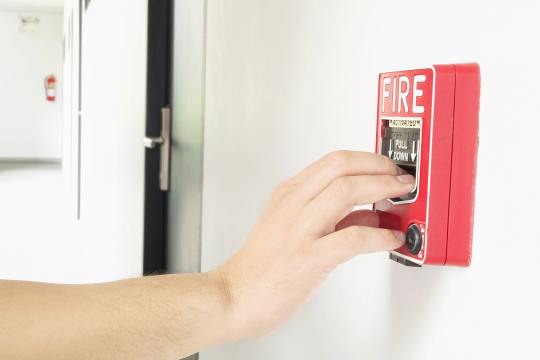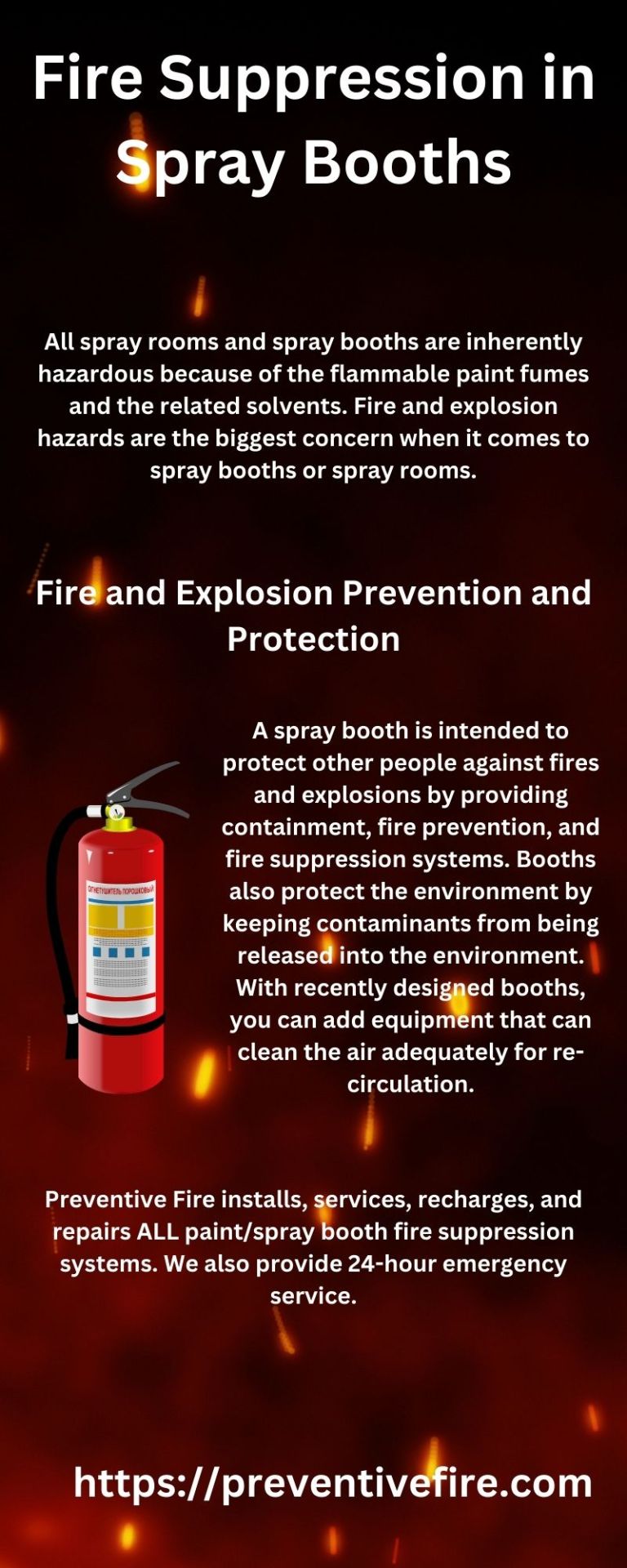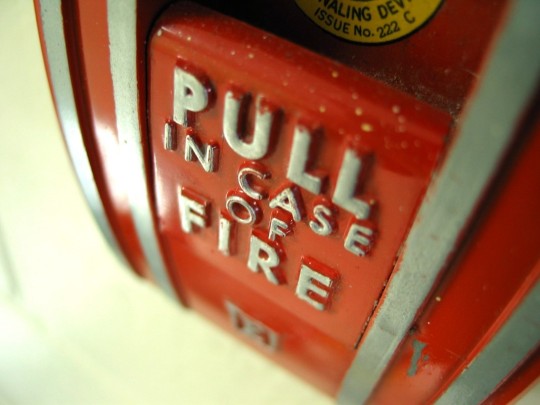#fire suppression
Text


Fire suppression p.1 & p.2: “Flame Retardant” & “Building Potential” Inspired by the PEM's ‘Our Time on Earth’ exhibit
I was gladly surprised to see the exhibit’s various optimistic installations, especially the building materials of the future. As a forestry student I am beginning to understand our relationship to our forests differently. In the US, forest policy which aimed to suppress wildfires has contributed to a century-long build up of fuel that would otherwise have been cleared by controlled burns or small spontaneous ground fires. Indigenous peoples shaped the forests of the Americas to require these controlled burns. More and more I realize that indigenous knowledge and collaboration is a necessary part of the stewardship of future. A concept which is present at large at the museum but also specifically within Our Time on Earth. Getting a ‘sustainable’ amount of lumber from our forest still disregards the health and purpose of these trees to a diverse and complex ecosystem. It is essential that we diversify our building material, to include carbon-negative things like mycelium! Natural resources that are close by, and at hand in our local environment, which doesn’t require chopping down a tree 3000 miles away and transporting it to the US. We need local resources whose collective cultivation lead to a sense of community and collaboration. A better future!
My thanks to lane.m.artin for collaborating with me for p.2!
#acrylic painting#artists on tumblr#PEM#peabody essex museum#climate change#fire suppression#wild fire#TEK#Traditional ecological knowledge#controlled burning#art of mine#solarpunk#is how i would describe the exhibit but listen I am just doing my best and maybe this gallery might even see this piece in it's peripheral#and thats a win#contemporary art
114 notes
·
View notes
Text
youtube
Ecosia is the search engine that plants trees. Get on Ecosia and be climate active every day: https://www.ecosia.org/
California’s wildfires are getting bigger, hotter, more frequent, and more difficult to control. What happened? Why are wildfires increasing in size and intensity so much that we had to coin new terms like “megafire” and “gigafire”? And what needs to change to return to a healthy fire cycle?
Climate change plays a major role: the extreme heat and drought it causes makes fires much more likely. But that’s not all there is to it. In this video, we’re looking at the history of California’s forests, why fire suppression actually led to worse fires, and the advantages of controlled burns and thinning forests.
#Ecosia #California #Wildfires
01:07 California’s forest ecology
02:18 How the natural cycle was broken
04:57 The new mega- and giga-fires
06:12 What we can do
09:05 Conclusion
———
Director: Shane Thomas McMillan (IG: @dokumentarian)
Producer: Fátima González-Torres (IG: @fatilugonzalevic)
Creative directors: Shane Thomas McMillan and Fátima González-Torres
Script: Shane Thomas McMillan
Script editing: Joshua Gottlieb (IG: @joshigot) and Fátima González-Torres
Cinematographer: Shane Thomas McMillan
Editing & post-production: Shane Thomas McMillan
Punch keys to plant trees! Make Ecosia your default search engine:
https://www.ecosia.org/
Ecosia is available for Chrome, Firefox, Brave, Safari and many more.
You can also start your own forest through the Ecosia app:
https://ecosia.co/ecosiaformobile
Follow how your searches are replenishing the planet by visiting our blog (https://blog.ecosia.org), Instagram (@ecosia) and Twitter (@Ecosia).
Want to make a difference? Check out our Tree Store and buy trees for climate action, trees that purify water sources, trees that empower women, and many more! After your purchase, we’ll email you a certificate that makes a thoughtful gift: https://plant.ecosia.org
#ecosia#solarpunk#California#USA#forest fire#wildfire#wildfire season#forests#climate chaos#climate crisis#climate change#global warming#global heating#megafire#gigafire#controlled burns#fire suppression#fire suppression system#forest thinning#Youtube
3 notes
·
View notes
Quote
In the summer of 2021 fires swept through the famous sequoias in California, killing a fifth of them. One of them was the Waterfall Tree – burned to a crisp. Long thought of as indestructible, these trees have been dying in increasing numbers in recent years. "What we are seeing now is that wildfire is capable of incinerating large giant sequoias in large numbers," said Christy Brigham, chief of resource management and science for Sequoia and Kings Canyon National Parks. "The primary driver is the 100-year history of fire suppression, but it's being made worse by climate change-driven hotter drought." The disappearance of giant sequoia genetics is also a concern. "We don't know what we may have lost," said Brigham. "But we are talking about a species that has already gone through a genetic bottleneck and is only found in 78 groves. Now we have these wildfires that have burned up 19% of the adult large-tree population. In one grove, 80% of the grove is gone."
Jim Robbins, ‘The genetic power of ancient trees’, BBC
#BBC#Jim Robbins#California#Waterfall Tree#giant sequoias#Christy Brigham#Sequoia National Park#Kings Canyon National Park#fire suppression#climate change#drought#genetics disappearance#wildfires#adult large-tree population
3 notes
·
View notes
Text
Another term for a fire pump is a fire protection pump or water pump, which provides enough water pressure and flow to power sprinkler design systems, standpipes, and other systems that help control or put out fires. For additional information on fire pumps and their types, visit this blog.
#fire pumps#fire protection#fire safety#fire suppression#water pressure#fire prevention#building safety#maintenance#fire suppression engineer#fire sprinkler design#sprinkler design
1 note
·
View note
Text
"Ensuring Safety: Your Firefighting System Partners."
The leading provider of firefighting systems in Qatar is Unico Trading and Services. Our highly qualified engineers can manufacture, sell, install, maintain, and replace various fire safety equipment based on the requirements of our clients.
We provide a variety of extinguishers for various fire damage situations and atmospheric conditions, including foam, dry powder, CO2, water, and wet chemicals. We are the top providers of fire alarm systems in Doha, Qatar. Our efficient alarm system can detect every potential fire risk in a structure and alert those inside to an incoming fire.

#fire#fire alarm#fire extinguisher#fire safety#fire sprinkler#foam sprinkler#fire hose#safety#fire suppression system#fire valve#fire fighters#fire suppression#fire protection
0 notes
Text
What Are Fire Suppression Systems?
Fire suppression systems are fire protection systems that extinguish, control and sometimes even prevent the spread of fires. Industrial consultants for fire safety prefer this system as they extinguish fires through heat absorption and depletion of oxygen.
#fire#design#consultants#fire safety design#mep design#fire suppression#Architecture#industrial projects
0 notes
Text
Fire Extinguishers vs. Fire Suppression Systems: Choosing the Right Fire Safety Equipment

The importance of adequate measures to combat fires cannot be overstated in fire safety. Fire hazards necessitate proactive strategies to mitigate the risks in homes, businesses, or industrial settings. Two primary tools for this purpose are fire extinguishers and fire suppression systems. While both serve the overarching goal of fire prevention and control, they differ significantly in their mechanisms, applications, and effectiveness. This article delves into the distinctions between fire extinguishers and fire suppression systems to help individuals and organizations make informed decisions about their fire safety equipment.
Fire Extinguishers: Versatile and Portable
Fire extinguishers are the most recognizable firefighting equipment, known for their portability and ease of use. They come in various types, including water, foam, carbon dioxide (CO2), dry chemical, and wet chemical extinguishers, each designed to combat specific types of fires.
One of the key benefits of fire extinguishers lies in their versatility. They can be readily deployed in homes, offices, vehicles, and other small to medium-sized spaces. Their portability allows quick access during emergencies, enabling individuals to suppress small fires before they escalate.
Each type of fire extinguisher is designed to target particular classes of fires. For instance, water extinguishers are suitable for Class A fires involving ordinary combustibles like wood and paper, while CO2 extinguishers are effective against electrical fires. This specificity ensures that the appropriate extinguishing agent is used, minimizing the risk of exacerbating the fire.
However, fire extinguishers have limitations. They require manual operation, meaning someone must be present and trained to use them effectively. Additionally, their effectiveness is contingent upon factors such as the size and intensity of the fire, the operator's skill level, and the proximity to the fire source. While they are invaluable for tackling small fires, there may need to be more for larger conflagrations or high-risk environments.
Fire Suppression Systems: Automated and Comprehensive
Fire suppression systems offer a more comprehensive approach to fire protection, particularly in larger or high-hazard settings such as commercial kitchens, data centers, manufacturing facilities, and server rooms. Unlike fire extinguishers, which rely on manual intervention,
suppression systems are engineered to detect and extinguish fires without human intervention automatically.
One of the key components of fire suppression systems is their detection mechanisms. These systems utilize various technologies such as heat sensors, smoke detectors, and flame detectors to rapidly identify the presence of fire. Once a fire is detected, the suppression system springs into action, releasing an extinguishing agent or triggering other suppression methods.
There are several types of fire suppression systems, including:
Water-Based Systems: Such systems utilize water as the primary extinguishing agent and effectively address Class A fires. They may include sprinkler or deluge systems that discharge water over a wide area to suppress flames.
Chemical-Based Systems: These systems utilize specialized chemicals, such as dry or wet chemical agents, to extinguish fires. They are effective against various fire classes and are often used in environments where water-based systems are unsuitable, such as areas with sensitive electronic equipment.
Gaseous Systems: Gaseous suppression systems deploy inert gases or chemical agents to reduce oxygen levels or inhibit the chemical reactions necessary for combustion. These systems are commonly used in areas where water or chemical agents may cause damage, such as server rooms or archives.
Foam Systems: Foam suppression systems discharge a foam blanket over the fuel surface, smothering the fire and preventing reignition. They are frequently employed in flammable liquid storage areas or fueling stations.
Eco-Friendly Fire Suppression Systems: Among the array of fire suppression systems available, eco-friendly options are gaining prominence. These systems utilize clean agents, inert gases, or low-impact chemical compounds with minimal environmental repercussions. By prioritizing sustainability, eco-friendly fire suppression systems minimize harmful emissions and reduce ecological footprint while effectively suppressing fires. Additionally, innovations such as water mist or foam solutions optimize resource usage, making them environmentally responsible choices for fire protection needs.
While fire suppression systems offer automated protection and are highly effective in extinguishing fires quickly, they require careful design, installation, and maintenance. Improperly designed or maintained systems may fail to detect or suppress fires adequately, leading to catastrophic consequences. Additionally, suppression systems can be costly to install and maintain, making them more suitable for environments where the potential loss of life, property, or critical assets justifies the investment.
Choosing the Right Solution
When determining whether to use fire extinguishers or fire suppression systems, several factors must be considered, including the size and layout of the space, the nature of the fire hazards present, regulatory requirements, and budgetary constraints.
Fire extinguishers may suffice as primary firefighting equipment in smaller residential or commercial settings with low to moderate fire risks. However, fire suppression systems offer a more comprehensive solution in larger or high-hazard environments where rapid fire detection and suppression are critical.
Ultimately, the best approach to fire safety often involves a combination of fire extinguishers and suppression systems tailored to the specific needs and risks of the environment. Regular inspections, maintenance, and employee training are vital components of any fire safety plan, ensuring that equipment remains operational and personnel are prepared to respond effectively to emergencies.
In conclusion, while fire extinguishers and fire suppression systems serve the common goal of fire prevention and control, their mechanisms, applications, and effectiveness differ. Comprehending the advantages and drawbacks of each can help individuals and organizations make informed decisions to protect lives, property, and assets from the harmful impacts of fire.
#fire suppression systems#fire safety solution#eco-friendly fire safety#suppression agents#fire suppression#clean agent suppression#eco-friendly fire suppression systems#fire extinguisher#portable fire extinguisher#multipurpose extinguisher
0 notes
Text
Technological Innovations Shaping the Future of Fire Fighting Foam Solutions Worldwide
The global fire fighting foam market size is anticipated to reach USD 6.73 billion by 2030, according to a new report by Grand View Research, Inc. It is projected to propel at a CAGR of 3.6% over the forecast period. Increasing fire-related accidents and wildfires across the globe due to various factors, such as climatic changes, human errors, electrical faults, and gas leakage, are anticipated to drive the industry over the forecast period. The Aqueous Film Forming Foam (AFFF) segment led the global industry in 2021. The Asia Pacific region is expected to be the largest and fastest-growing regional market by 2030 due to increasing fire incidents resulting in loss of life and damage to property and the environment.

Fire Fighting Foam Market Report Highlights
The Aqueous Film Forming Foam (AFFF) segment led the industry in 2021 owing to the property of AFFF of instant form formation upon ejection of the concentrate or water mix from the nozzle
The class A segment dominated the global industry in 2021. Class A fires involve common combustible substances, such as fabric, wood, paper, and plastics
These accidental fires are common in various industries since these fires can intensify at a high rate in the presence of fuel abundance
Growing fire-related accidents due to numerous factors across North America, Europe, and the Asia Pacific are expected to fuel the industry growth
Furthermore, the foam blanket suppresses the oxygen supply to flammable material, hence preventing combustible evaporation
For More Details or Sample Copy please visit link @: Fire Fighting Foam Market Report
For instance, in 2021, Hong Kong witnessed a major fire breakout across a skyscraper building, captivating and injuring numerous people. Hence, rising fire incidents are propelling product demand and are expected to follow a similar trend throughout the forecast period. New product development and acquisitions are the major strategies adopted by companies to capture the industry. For instance, in April 2021, Johnson Controls introduced Chemguard 3×3, a non-fluorinated foam concentrate, which is expected to deliver effective and impulsive fire suppression of Class B hydrocarbon and polar solvent fuel fires.
#FireFightingFoamMarket #FireFightingFoam #FireSuppression #FoamTechnology #FireSafety #EmergencyResponse #FirePrevention #FoamSystems #FirefightingEquipment #IndustrialSafety #FireProtection #FoamAgents #GlobalMarket #SafetyInnovation #ChemicalFireSuppression #MarketAnalysis #SafetyStandards #EnvironmentalImpact #FireRiskManagement #InnovativeSolutions #RegulatoryCompliance
#Fire Fighting Foam Market#Fire Fighting Foam#Fire Suppression#Foam Technology#Fire Safety#Emergency Response#Fire Prevention#Foam Systems#Fire fighting Equipment#Industrial Safety#Fire Protection#Foam Agents#Global Market#Safety Innovation#Chemical Fire Suppression#Market Analysis#Safety Standards#Fire Risk Management
0 notes
Text
In the realm of electrical safety, one crucial aspect often overlooked is fire protection for electrical panels. The Electrical Panel Fire Protection System is a vital defense mechanism against potential disasters caused by electrical fires. In this Blog we delve into the significance of this system, its operation, and its role in safeguarding structures and lives.
Understanding the Electrical Panel Fire Protection System
The Basics of Fire Suppression
Before delving into the specifics of the Electrical Panel Fire Protection System, let's grasp the fundamentals of fire suppression. Fire suppression systems are designed to extinguish fires swiftly, limiting their potential damage. These systems are crucial in high-risk environments like data centers, industrial facilities, and commercial establishments.
The Role of Fire Suppression Systems for Electrical Panels
The Electrical Panel Fire Protection System is a specialized form of fire suppression designed explicitly for electrical panels. Electrical panels are critical hubs that distribute power throughout a building. When a fire ignites within an electrical panel, the potential for widespread destruction is immense. The fire protection system acts as a shield, suppressing the flames before they can escalate.
How Does the Electrical Panel Fire Protection System Work?
Detection Mechanism
The system's effectiveness lies in its early detection capabilities. Advanced sensors are strategically placed near electrical panels. These sensors are equipped to identify unusual heat patterns or the initial signs of an electrical fire.
Rapid Suppression
Once the system detects an anomaly, it springs into action. It releases a specialized fire suppressant – often a clean agent or inert gas – directly into the affected panel. This suppressant swiftly cools down the environment, effectively fire extinguishers at its source.
Minimizing Damage
One of the standout features of the Electrical Panel Fire Protection System is its ability to minimize collateral damage. Traditional firefighting methods, such as water-based solutions, can inadvertently cause more harm due to water's conductive nature. The system's targeted suppression reduces the risk of further electrical damage.
Advantages of the Electrical Panel Fire Protection System
Swift Response Time
The system's automated detection and suppression process ensure an incredibly rapid response time. This swift action significantly reduces the chances of a minor spark escalating into a full-blown fire.
Protection of Critical Infrastructure
Electrical panels house intricate and valuable equipment. By preventing or minimizing damage to these panels, the system safeguards critical infrastructure and prevents potential downtime.
Human Safety
Above all, the Electrical Panel Fire Protection System prioritizes human safety. By containing fires before they spread, it provides valuable time for occupants to evacuate safely.
Conclusion
In the realm of fire safety, the Fire Protection System plays a vital role in mitigating the risks posed by electrical fires. Its proactive approach, rapid response time, and focus on both property and human safety make it an indispensable component of modern building management.
#Electrical Panel Fire Protection System#Electrical Panel#fire protection for electrical panels#Fire Safety#Human Safety#Fire Protection System#Fire Suppression#Electrical Safety
0 notes
Text

Through the use of containment, fire prevention, and fire suppression technologies, a spray booth is designed to safeguard others from fires and explosions. By preventing toxins from being released into the environment, booths also safeguard the ecosystem. You can include technology that can effectively clean the air for re-circulation in newly constructed booths.
0 notes
Text
Buy Fire Doors for Long-Term Protection
With over 45 years of experience, Ashes Fire Group is one of Melbourne's best professional passive fire protection services. Our fire doors provide a wide range of professional services to our clients to prevent and mitigate the outbreak of fire Doors. We provide various fire safety and protection services, such as smoke doors, fire safety, fire suppression, fireproof doors, and more. Visit our website for more information.
0 notes
Text
Looking to get a fire sprinkler design system installed? Well, you're in luck! Our blog has all the info you need to pick the right company.
#fire safety#sprinkler system#fire prevention#life safety#protective systems#fire protection#building safety#fire sprinkler design#fire suppression engineer#fire sprinkler engineer#fire suppression#fire sprinkler installation
1 note
·
View note
Photo

4 ESSENTIAL WAYS TO MAINTAIN SAFETY IN YOUR WORKPLACE
One of the top priorities for any workplace, school, college, or university, mall, theatre, or management staff is fire safety. The greatest risk is from fire because if a fire starts inside a building, it will not only completely destroy that area but will also spread quickly, possibly killing someone.
0 notes
Text

A business fire extinguisher is a portable device that helps to extinguish small fires in workplaces. It usually contains Class A foam, powder, or water and can be operated by one person. business fire extinguishers are typically required to be present in all commercial establishments by local fire codes.
0 notes
Link
0 notes
Text
Advancing Safety: Exploring Fire Suppression Systems Across Environments

In the ever-evolving landscape of safety technology, fire suppression systems have emerged as crucial guardians, protecting lives and property across diverse environments. From commercial spaces to industrial complexes and residential areas, these systems play a pivotal role in mitigating the devastating impact of fires. This article delves into the multifaceted world of fire suppression, exploring its advancements, applications, and the transformative impact it has on enhancing safety in different environments.
Understanding Fire Suppression Systems:
Fire suppression systems are comprehensive solutions designed to rapidly detect, control, and extinguish fires. They encompass a range of technologies and approaches tailored to specific environments, each with its challenges and requirements. These systems go beyond the traditional fire extinguisher, offering automated and integrated responses to fire emergencies.
Applications in Commercial Spaces:
Fire suppression systems are indispensable in commercial settings, safeguarding businesses, employees, and valuable assets. Advanced detection mechanisms like smoke and heat sensors enable rapid identification of potential fire incidents. Automatic suppression agents, such as water mist, foam, or gas-based extinguishers, swiftly respond to suppress the flames, minimizing damage and ensuring the safety of occupants.
Industrial Complexes and High-Risk Environments:
In high-risk environments like industrial complexes, where the stakes are higher, sophisticated fire suppression systems are imperative. These systems are tailored to the specific nature of industrial processes and materials. For instance, chemical fire suppression agents are deployed in areas where water may exacerbate the situation. Integrating cutting-edge technologies, such as flame and gas detection systems, ensures early intervention and containment of potential disasters.
Residential Fire Suppression:
As safety concerns extend to residential spaces, modern homes increasingly adopt fire suppression systems. These systems are often designed to integrate seamlessly with smart home technology, providing homeowners real-time monitoring and control. Automatic sprinklers, connected to fire detection systems, can swiftly respond to incidents, limiting the spread of fires and offering crucial time for evacuation.
Advancements in Fire Detection:
The core of effective fire suppression lies in early detection. Recent advancements in sensor technologies have revolutionized fire detection systems. From advanced smoke detectors with improved sensitivity to intelligent algorithms that can differentiate between false alarms and actual threats, these innovations contribute to more reliable and efficient fire suppression.
Innovative Suppression Agents:
The choice of suppression agents has also witnessed innovation. Traditional water-based systems are evolving into more specialized options. For instance, clean agent suppression systems use gases like FM-200 or Novec 1230, which leave no residue, making them suitable for sensitive equipment and environments where water damage must be minimized.
Challenges and Considerations:
While fire suppression systems have made significant strides, challenges persist. It is essential to guarantee these systems' appropriate design, installation, and upkeep. Additionally, environmental considerations drive the development of eco-friendly suppression agents, addressing concerns about the impact of certain chemicals on the ozone layer or global warming.
Integration with Building Management Systems:
The synergy between fire suppression systems and building management systems (BMS) is a key aspect of modern safety measures. Integration allows centralized monitoring and control, enabling a swift and coordinated response to potential fire incidents. This interconnected approach enhances overall building safety and minimizes response time in critical situations.
Training and Education:
Human awareness and response are often overlooked but critical aspects of effective fire suppression. Training occupants on how to use fire extinguishers, evacuation procedures, and the importance of early reporting contributes significantly to the overall effectiveness of fire suppression systems.
Global Impact and Regulatory Standards:
The impact of fire suppression systems is not limited to individual environments; it extends globally. As fire safety becomes a universal concern, regulatory standards are evolving to ensure the reliability and effectiveness of these systems. Compliance with international standards ensures occupants' safety and facilitates seamless global operations for businesses.
Conclusion: A Safer Tomorrow:
In conclusion, the evolution of fire suppression systems represents a monumental step towards creating safer environments across various sectors. From business establishments to industrial compounds and residential zones, these systems act as vigilant protectors, prepared to swiftly and efficiently counter potential threats. Technological progress, alongside an increasing focus on environmental accountability and worldwide safety regulations, is guiding the fire suppression sector toward a future where the destructive consequences of fires are reduced, ensuring the safeguarding of lives and property with unparalleled effectiveness. As we embrace these innovations, we move closer to a safer tomorrow, where the threat of fire is met with cutting-edge solutions that transcend boundaries and environments, ensuring the well-being of communities worldwide.
#ire suppression systems#fire safety solution#eco-friendly fire safety#suppresion agents#fire suppression#clean agent suppression#FM-200#Novec 1230
0 notes